What are fusible plugs?
Fusible plugs are a type of warning device employed on compressed air systems, well heads and steam systems. They are considered a last line of defense and are often used to avert a catastrophic failure occurring e.g. explosion. Whist safety valves protect machinery items from over pressure, fusible plugs protect machinery items from over temperature.
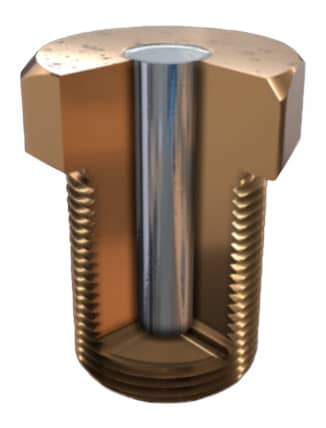
Fusible Plug
Fusible plugs have found widespread application in many industries due to their simple design, effectiveness and improvements to safety. They are commonly installed within compressed air systems and coal fired boilers; boilers burning light fuel oil (LFO) or gas are not always equipped with a fusible plug.
Fusible Plug Materials
Fusible plugs contain a fusible alloy housed within a brass, bronze or gun metal threaded plug body. The material chosen for the fusible alloy has a predetermined melting point that is lower than the plug body material’s melting point. A common fusible alloy material is tin, which has a melting point of 232°C (450°F).

Fusible Plug Body and Alloy
Enjoying this article? Then be sure to check out our Engineering Video Courses! Each course has a quiz, handbook, and you will receive a certificate when you finish the course. Enjoy!
How Fusible Plugs Work
The fusible alloy within a fusible plug is designed to melt at a lower temperature than the surrounding plug body. If the plug is exposed to elevated temperatures, the fusible alloy will melt and a straight or tapered channel will be formed lengthwise through the plug body. The open channel allows the system pressure to vent directly to a predetermined location. For compressed air systems, this location is usually just the space surrounding the plug. For boilers, it is more likely to be the furnace or firebox. The fusible plug body is often shaped so that a whistling noise is created as the system pressure vents, this acts as a local audible alarm to system operators.
The below video is an extract from our Mechanical and Electrical Engineering Explained Online Video Course.
What is the purpose of a fusible plug?
Compressed Air Systems
Compressed air installations represent a considerable risk if exposed to fire, this is because the air within the system becomes heated and the system pressure rises until the pressure is too great for the system to hold. If this occurs, the pressure could be released catastrophically. Another danger is that the oil vapour within the air compressor could ignite due to the elevated temperatures; this mode of failure could also be catastrophic.
Steam Systems (Steam Boilers)
Fusible plugs are installed within boilers to reduce the risk of a boiler explosion as a result of low water firing. A low water level scenario in a boiler would lead to over heating of the heat transfer surfaces and resultant damage to the boiler would occur (with potential catastrophic results).
Boiler fusible plugs are classed as steam actuated or fire actuated, and can be installed on both fire tube boilers and water tube boilers. It's also possible to classify boiler fusible plugs as being either fire side or water side plugs. Fire side plugs are screwed from the fire side to water side. Water side plugs are screwed from the water side to fire side.
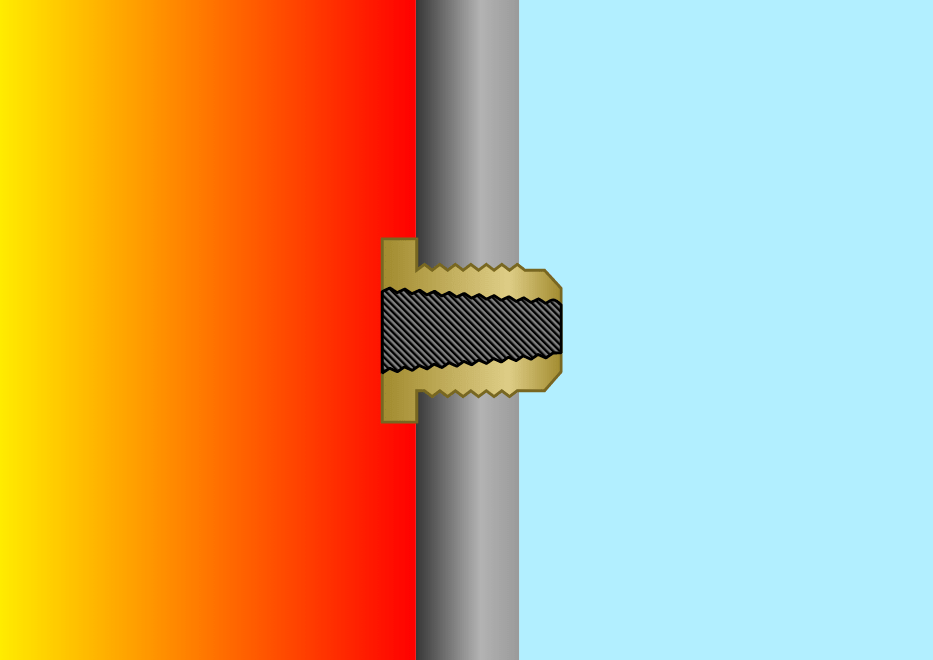
Fire Side Fusible Plug
Boiler fusible plugs usually vent steam to the firebox, which extinguishes the boiler flame and thus reduces the steam system temperature and pressure.
Where to Install a Fusible Plug
Compressed Air Systems
For compressed air systems, fusible plugs can be installed anywhere within the system, but they are usually installed directly after the air compressor(s) and upon compressed air storage vessels (un-fired pressure vessels).
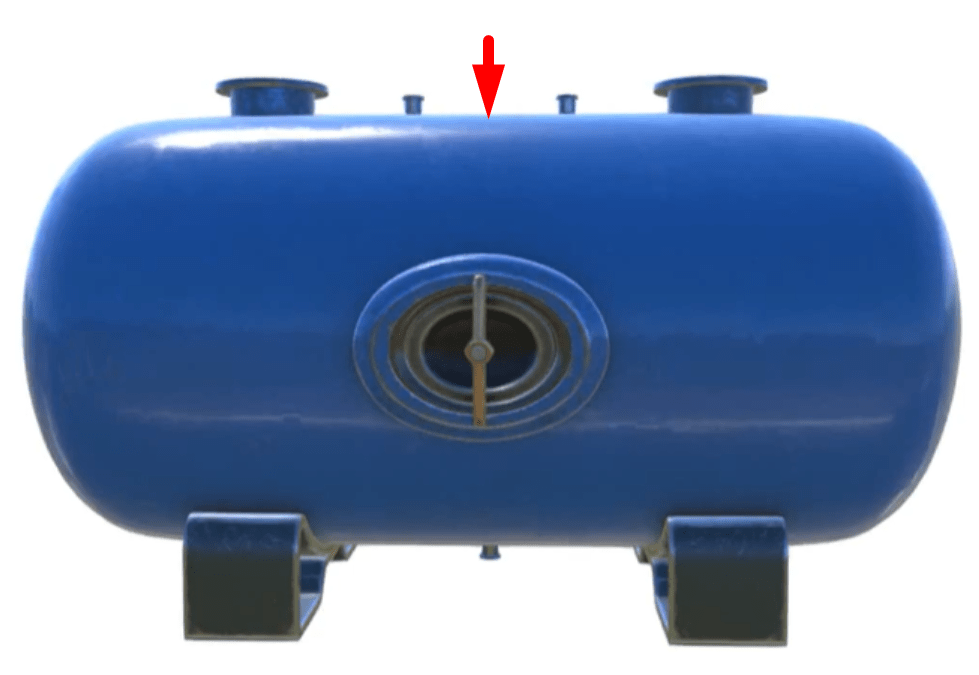
Location of Compressed Air Vessel Fusible Plug
Steam Systems
Fire tube boiler fusible plugs are installed 1 to 2 inches above the highest row of tubes. Typical locations for fusible plugs include the crown sheet (top of combustion chamber), rear tube sheet (Scotch marine boiler) and front tube sheet (firebox boiler). The location chosen depends upon the boiler design.
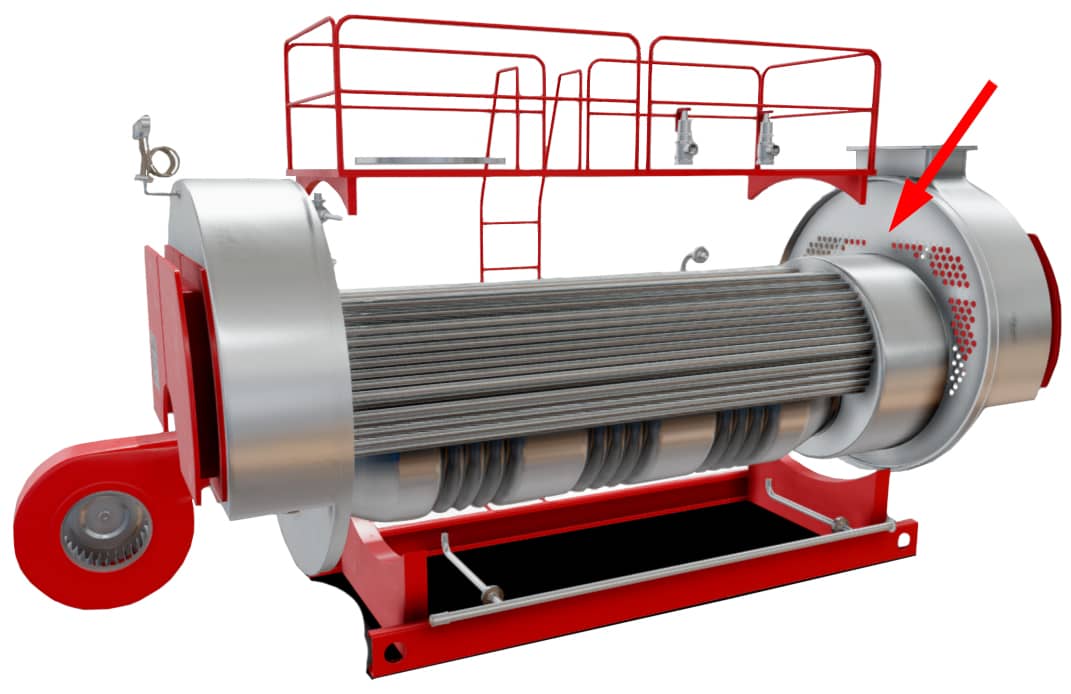
Location of Fire Tube Boiler Fusible Plug
Fusible Plug Maintenance
Compressed Air Systems
Compressed air systems are normally maintained in a clean state. Some oil carry-over may occur from the compressors, but this can be prevented by using oil-free compressors or filters. Moisture carry-over may also occur, but driers (usually desiccant or refrigeration types) are used to remove the moisture.
Providing that oil and moisture are removed, the compressed air system will remain clean and the fusible plug will remain in a good condition i.e. not coated in an oil film or corroded by water. Despite this, periodic changing of the plug is required as part of a preventative maintenance strategy (and sometimes to satisfy legislative requirements).
Steam Systems
There are several factors that may influence a boiler fusible plug's operation, these relate to the plug being insulated and not functioning correctly as a result. Insulating of the fusible plug is a problem that may occur on the water side, fire side, or both sides of the plug.
On the water side, dissolved solids may solidify on heat transfer surfaces and form an insulating barrier; this insulating barrier is known as scale. The insulating barrier reduces the heat transfer rate of the heat transfer surfaces (boiler tubes mostly), which causes a corresponding reduction in boiler efficiency and local overheating. Scale build-up on the fusible plug may cause the fusible plug not to operate as designed because heat transfer has been inhibited.
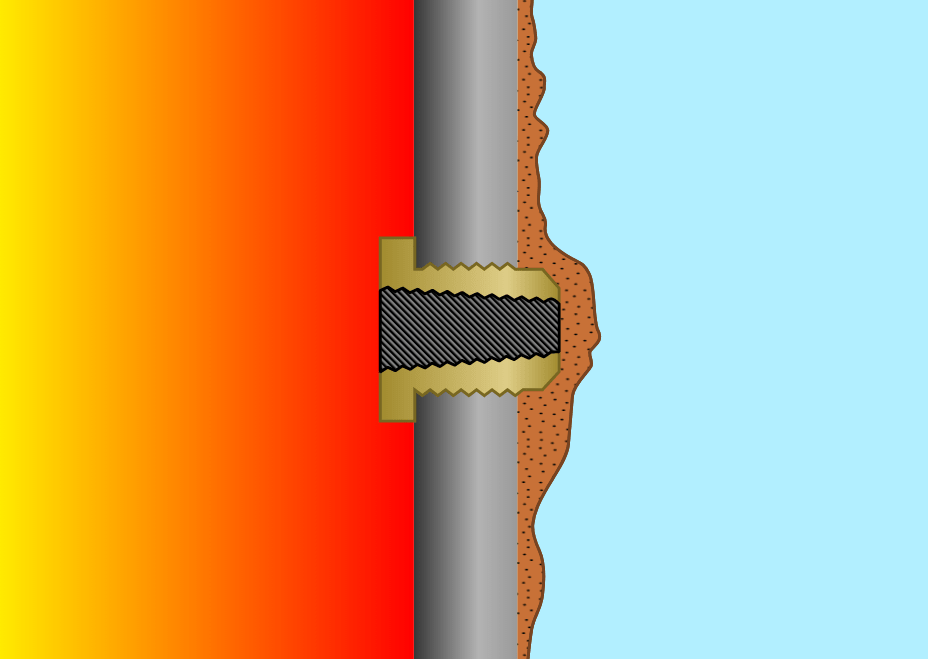
Scale on Fusible Plug
On the fire side, soot from combustion may accumulate on the fusible plug surface and form an insulating barrier. If this occurs, the fusible plug may not operate as intended. Soot should be removed from heating surfaces during maintenance.
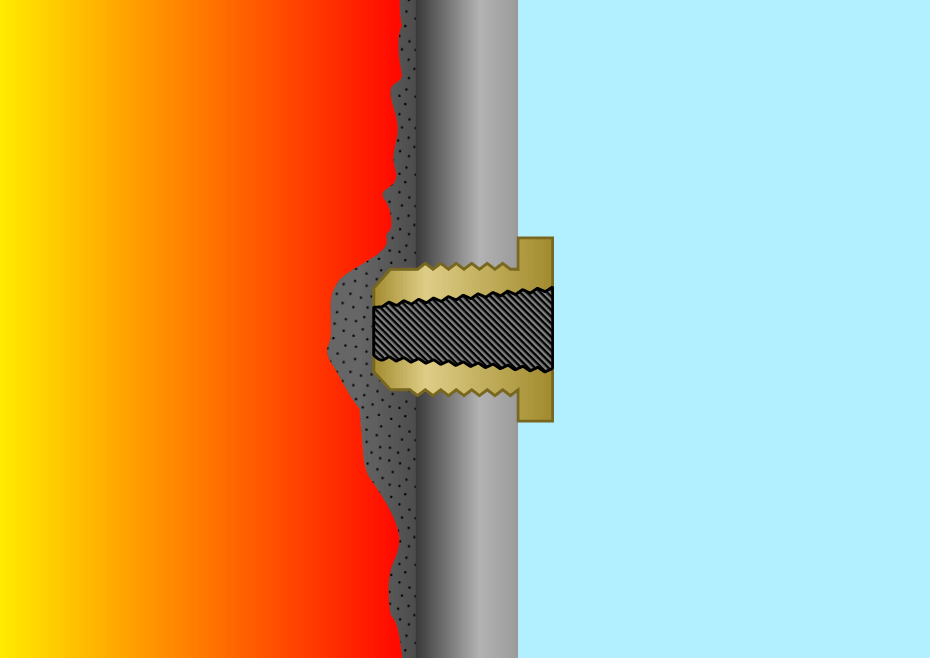
Soot on Fusible Plug
As tin (the fusible alloy) ages, its properties degrade. For this reason, annual replacement of fusible plugs is often advised. The ASME Boiler and Pressure Vessel Code advise annual replacement of fusible plugs on all coal fired boilers.
Related Online Engineering Courses
Introduction to Steam, Boilers and Thermodynamics
Low Water Fuel Cut Off Devices Explained
Additional Resources
https://en.wikipedia.org/wiki/Fusible_plug
